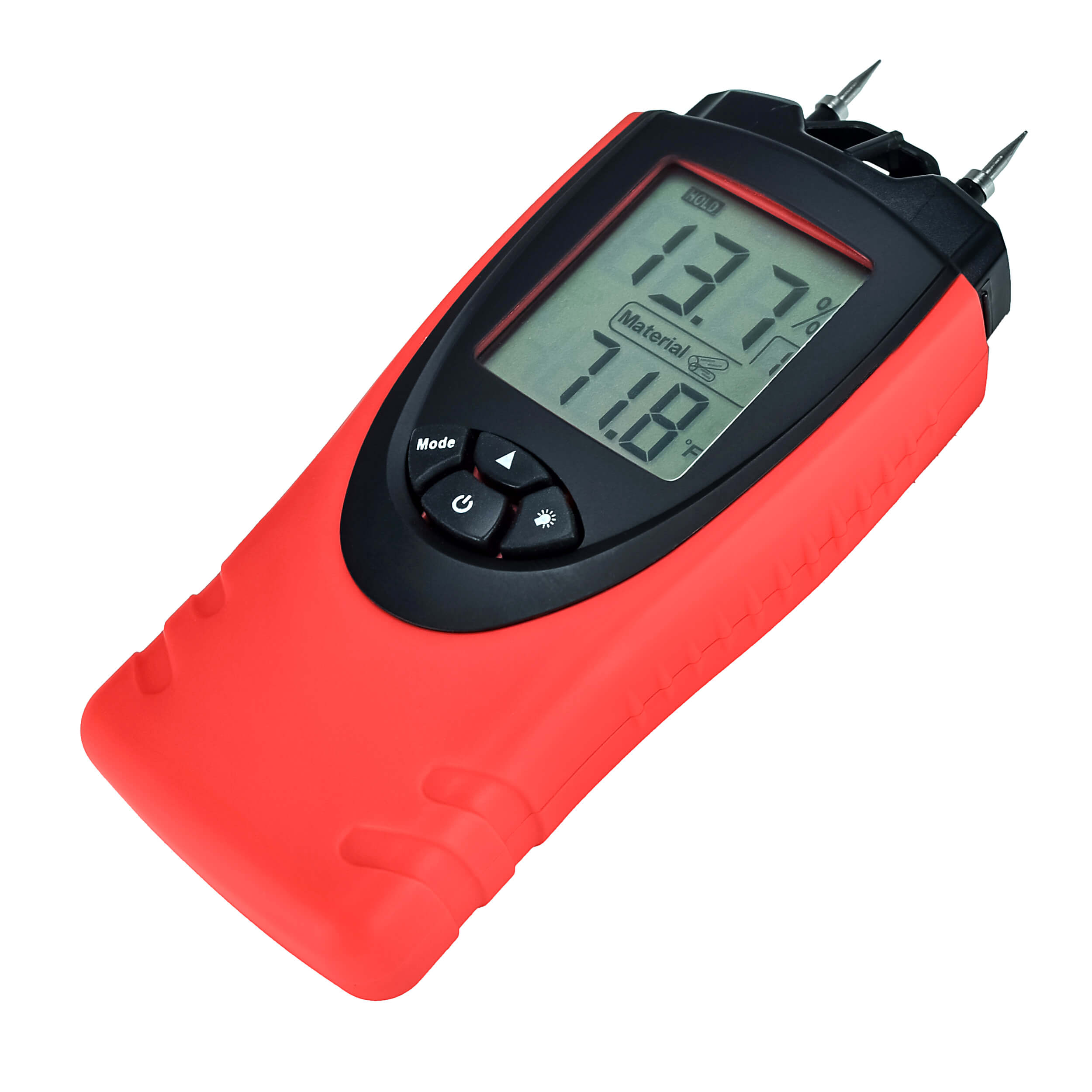How a Moisture Meter Can Improve Your Building And Construction Jobs and Protect Against Damages
How a Moisture Meter Can Improve Your Building And Construction Jobs and Protect Against Damages
Blog Article
Delve Into the Globe of Moisture Meters: Whatever You Need to Know
In the realm of moisture meters exists a globe of precision and practicality that frequently goes unnoticed. These tools, while seemingly straightforward, hold a wide range of information that can considerably affect various markets and applications. Recognizing how moisture meters run, the various types readily available, and their diverse uses can clarify their importance in guaranteeing high quality and effectiveness. By discovering the intricacies of dampness meters, one can reveal a useful device that transcends simple dimension, offering understandings that can make a substantial distinction in various fields.
How Moisture Meters Work
Moisture meters operate by measuring the electric conductivity or capacitance of materials to establish the moisture content existing. These meters are vital tools throughout different sectors, including building, agriculture, and woodworking. By making use of different approaches such as pinless or pin-type modern technology, dampness meters give accurate analyses that help specialists make notified decisions.
Pin-type wetness meters function by inserting the sharp pins into the product being tested. On the other hand, pinless dampness meters use electromagnetic signals to check a larger location without creating any damage to the material's surface area.
No matter the approach made use of, dampness meters play an important role in protecting against concerns such as mold growth, structural damage, or product defects brought on by excess moisture. Comprehending just how these meters job is important for making certain the top quality and stability of products in different applications.
Kinds Of Moisture Meters
Provided the important function moisture meters play in numerous industries, it is vital to comprehend the different kinds offered to professionals for accurately evaluating moisture levels - Moisture Meter. There are primarily 2 main sorts of dampness meters: pinless and pin-type moisture meters

On the various other hand, pinless wetness meters utilize electro-magnetic sensing unit plates to scan a larger location of the product without creating any type of damage. This kind is ideal for promptly scanning large locations and is generally utilized for floor covering, walls, and ceilings. Pinless meters are convenient for taking analyses on completed surface areas without leaving any type of visible marks.
Both kinds of dampness meters have their benefits and are selected based on the certain requirements of the work at hand. Comprehending the differences in between these kinds is critical for professionals to make exact dampness evaluations.
Applications Throughout Industries
Construction experts depend on moisture meters to evaluate the moisture levels in structure materials like wood, concrete, and drywall, which is essential for maintaining structural integrity and protecting against problems like rot or mold and mildew. The flooring industry uses moisture meters to gauge the this link moisture content in subfloors prior to mounting numerous flooring treatments, stopping expensive damages due to excess wetness. In the food sector, wetness meters are made use of to keep track of and regulate moisture degrees in products such as grains, nuts, and dried fruits to keep quality and quality.
Tips for Using Dampness Meters
When gauging the wetness web content in different products,Utilize the moisture meter's calibration settings to make certain accurate readings. Calibration is vital for the proper performance of a dampness meter. Before each use, it is advisable to examine and change the calibration setups according to the specific material being examined. Additionally, make certain the meter is readied to the right moisture array for the material you are measuring to acquire one of the most precise results.
When utilizing a pin-type moisture meter, place the pins to the appropriate depth recommended for the product being evaluated. This ensures that the wetness analyses are extracted from the proper depth within the product, offering an extra precise depiction of its moisture web content. For pinless dampness meters, keep in mind to preserve appropriate contact with the product's surface to get dependable analyses.
Consistently check and change the batteries in your wetness meter to stop incorrect analyses as a result of reduced power. When not in usage to prolong its life-span and keep its accuracy, Shop the meter in a completely dry and safe place. By following these suggestions, you can make best use of the efficiency of your moisture meter and get specific wetness content measurements across various materials.
Upkeep and Calibration
To guarantee the precision of moisture material dimensions, normal maintenance and calibration of the wetness meter are vital action in its appropriate performance. Maintenance entails keeping the moisture meter tidy and free from debris that might influence its readings. It is important to follow the manufacturer's guidelines for cleaning up to stop damages to the tool. Additionally, normal calibration is needed to verify the precision of the analyses. Calibration adjusts the wetness meter to make certain that it provides consistent and reliable results.
Calibration ought to be Get More Information carried out periodically, especially if the wetness meter is used often or in vital applications where accurate dimensions are called for. Several dampness meters include calibration devices or can be adjusted by professional services. Moisture Meter. It is suggested to keep a log of calibration dates and results to track the efficiency of the moisture meter gradually. By keeping and calibrating the moisture meter regularly, individuals can trust the precision of the dampness web content dimensions acquired.
Conclusion

Finally, wetness meters play an important role in various sectors by accurately gauging the wetness web content of additional resources products. Understanding just how these devices work, the different kinds offered, and appropriate upkeep and calibration are necessary for acquiring dependable results. Whether in manufacturing, building and construction, or agriculture, the use of dampness meters helps ensure quality assurance and efficiency in processes.

In verdict, dampness meters play a crucial role in various industries by accurately measuring the moisture content of materials.
Report this page